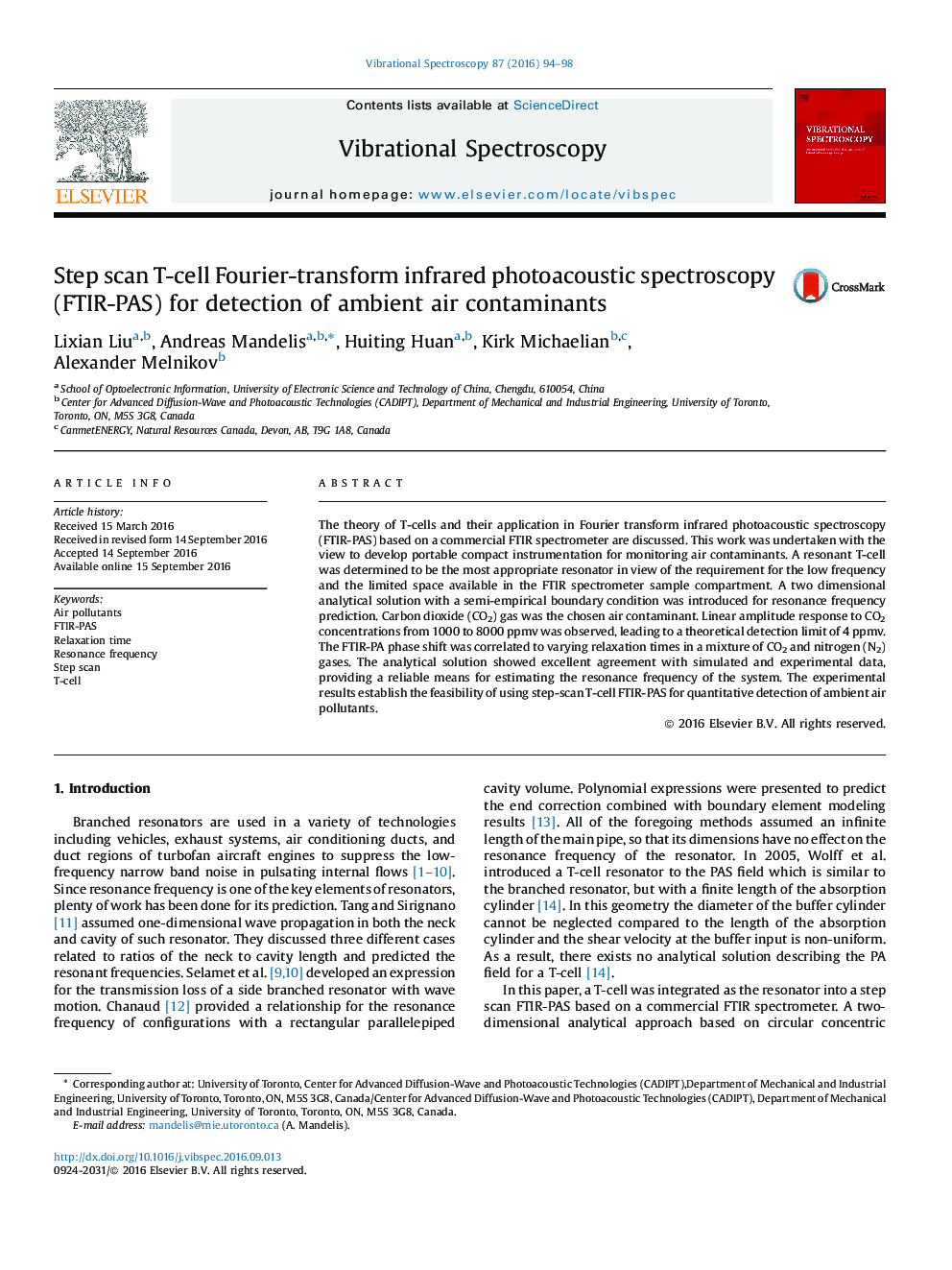| Article ID | Journal | Published Year | Pages | File Type |
|---|---|---|---|---|
| 7691009 | Vibrational Spectroscopy | 2016 | 5 Pages |
Abstract
The theory of T-cells and their application in Fourier transform infrared photoacoustic spectroscopy (FTIR-PAS) based on a commercial FTIR spectrometer are discussed. This work was undertaken with the view to develop portable compact instrumentation for monitoring air contaminants. A resonant T-cell was determined to be the most appropriate resonator in view of the requirement for the low frequency and the limited space available in the FTIR spectrometer sample compartment. A two dimensional analytical solution with a semi-empirical boundary condition was introduced for resonance frequency prediction. Carbon dioxide (CO2) gas was the chosen air contaminant. Linear amplitude response to CO2 concentrations from 1000 to 8000 ppmv was observed, leading to a theoretical detection limit of 4 ppmv. The FTIR-PA phase shift was correlated to varying relaxation times in a mixture of CO2 and nitrogen (N2) gases. The analytical solution showed excellent agreement with simulated and experimental data, providing a reliable means for estimating the resonance frequency of the system. The experimental results establish the feasibility of using step-scan T-cell FTIR-PAS for quantitative detection of ambient air pollutants.
Related Topics
Physical Sciences and Engineering
Chemistry
Analytical Chemistry
Authors
Lixian Liu, Andreas Mandelis, Huiting Huan, Kirk Michaelian, Alexander Melnikov,
